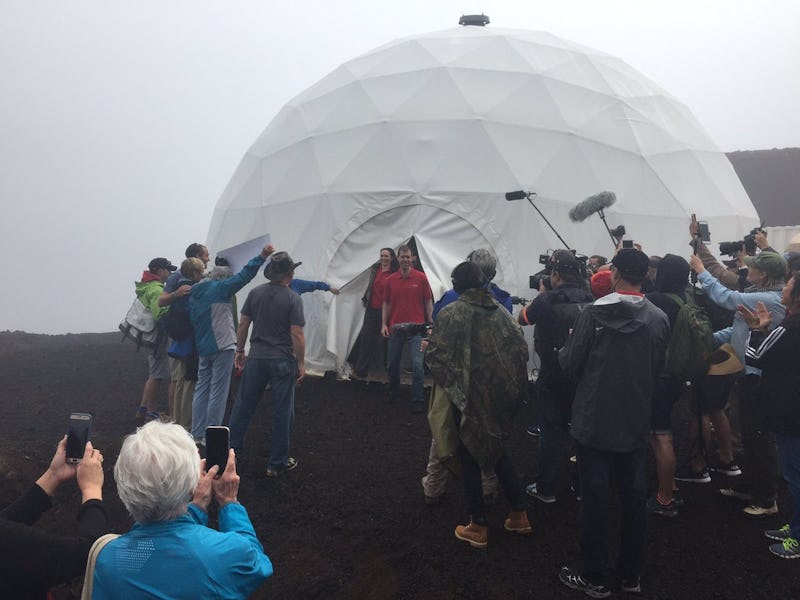Astronauts Emerge From Year-Long Mars Isolation Simulation
They still seem to get along after a year together, so that's good.

Just a couple hours ago, six scientists emerged from a year’s isolation in the volcanic terrain of Hawaii’s Mauna Loa. These participants in Hawaii Space Exploration Analog Simulation — “HI-SEAS” — experiment have spent the last year living in as perfect a simulation of Mars as NASA and the University of Hawaii can create, complete with 20-minute time-lags in all communication to properly reflect the distance between Earth and its neighbor.
The emergence of the “astronauts” after their long isolation means we can now hear straight from the source what it takes to live on simulated Mars for an entire year.
“Space, interestingly, is about what you value about Earth,” said Chief Medical and Safety Officer Sheyna Gifford at a press conference Sunday. “If your values are very much people and science and hard work, if you are intrepid, then this is for you. If you value control of your environment, if you value material goods, if you value constant entertainment, if you need to be plugged in all the time, this is not for you.”
The team also talked about the interpersonal challenges of sharing an enclosed space for such a long period of time: Crew commander Carmel Johnston said a challenge was understanding the particular ways her crewmates might deal with stressful situations. Passive aggression doesn’t really work in a confined space. Chief Engineering Officer Andrzej Stewart also pointed to the international character of the mission — certainly a possibility on something as complex and expensive as a real mission to Mars — and how it took some additional time for people to gain a better understanding of cultural differences.
“I like running outside, and running on a treadmill gets kinda boring after the first tenth of a mile,” said Johnston, reflecting on the day-to-day experience of living inside a bubble. “I think everybody enjoys being outside and having space around you and not hitting a wall all the time.” Crew Architect Tristan Bassingthwaighte admitted they would sometimes take six-hour excursions — always in a spacesuit, of course — with no particular objective beyond relieving boredom. NASA had better budget “activities to relieve tedium” into the costs of an actual Mars mission.
Still, there was at least one major perk to spending a year away from the rest of Earth. “The cool thing about living in isolation is you don’t get sick,” said Johnston.
“You’re in an isolated environment and viruses don’t just arise spontaneously, they have to be brought in,” added Gifford. However, Stewart did admit to an upset stomach at one point in the mission, which he said knocked him about for a couple days. And of course being in a sterile environment didn’t offer any immunity to injury. The team only suffered minor injuries and would have tried to persevere through a major one, but the team acknowledged they might have had to abandon the mission if something really serious had happened.
The University of Hawaii has posted the entire, rather windy 24-minute press conference on Periscope, which you can check out below.
If you’re interested in taking part in the next HI-SEAS isolation mission, applications are due on September 5.